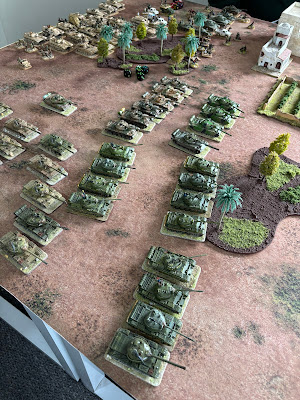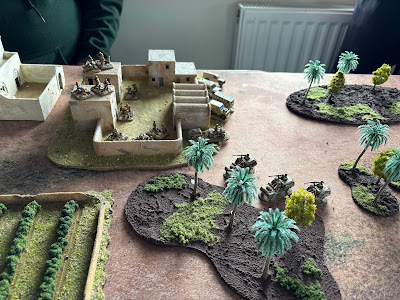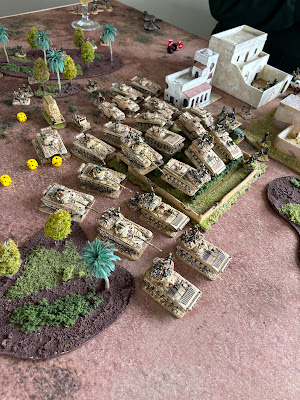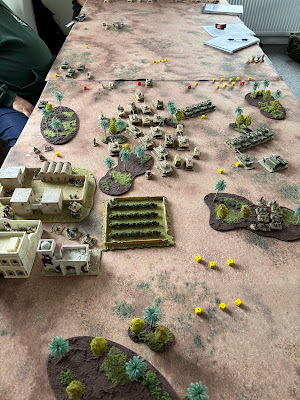Practical Computing began life all the way back in 1978 as very much an enthusiasts publication. By the time we get to this 1985 issue, it had already morphed into a business user magazine, one that would see it merge into Business Computing in 1987, before turning into an oxymoron for the ages, Management Computing in 1989. That ignominy was still a whiles away yet, so what do we have for the autumn of '85?
A really clear contents page, for one thing, and I really do like the layout. Certainly, looking at contemporary magazines, some contents pages were practically opaque, especially the "trendier" gaming mags.

I admit, I am a sucker for a good editorial, and here we have a pertinent question being asked of the status quo. The original IBM PC (8088 at 4.17MHz) was then four years old, and Big Blue were struggling to get quantities of working AT machines out of the door. Was there a future for IBM in the serious microcomputer sector. It had set a standard, although not the first as that was the Altair, then the Apple II, then the mass of 64kb Z-80-powered CP/M business computers, but as each was replaced in turn, what would succeed the IBM PC? There was talk of a new range of 32-bit 386 machines that would later feature in the PS/2 range, but the editor posits the end of an era where IBM defined the market. They state that there are opportunities for the Apple Mac, Atari ST, Commodore Amiga, and (because this still mattered back then), maybe some flag flying by ACT (who were in the process of changing their name to Apricot) and Amstrad, 'cos you have to have British companies, don't you? Let's ignore the fact that the latter pair were to become effectively IBM clone manufacturers and could define the market standard about as effectively as I can pole dance...

What actually happened was that although IBM remained highly important to the "PC" in the business world, it was a combination of Microsoft and the mass of clone manufacturers that truly established the "PC" as the dominant format. As has been noted before in this blog, whilst there was competition from other formats, the 086/DOS combo was well and truly established in the general business sector even at this point, and that momentum was more than enough to overcome the benefits of any other platform. It also helped that the first three platform companies name checked in the editorial conclusion would, to varying degrees, machine gun themselves in the foot with frightening regularity, whilst Apricot was moving towards full IBM-compatibility, and Amstrad concentrated on the serious side of making an obscene amount of money by 1980's standards flogging clones alongside it's own unique takes on home computers and word processors. No-one was going to replace the "IBM Standard", but IBM would not control that "standard" for much longer.
There's also a nice little "5 Years Ago" boxout that features the Sinclair ZX-80, selling really well and suffering from delivery delays. Oh, Clive, you never changed, did you... And bless those production numbers - 300 ZX-80's a day, hopefully rising to 500 per day by the end of the year. It may not seem it now, but that was quite the output for 1980 for any machine.

News now, and Data General (there's a blast from the past) were happy to announce their latest IBM-compatible (albeit without any PC-style expansion slots), and there was an update about the Atari 520ST review from the previous month. The original machine wasn't particularly reliable, but a replacement never faltered for a month, and limited deliveries to selected customers were underway. British Telecom feature in a nice notice about Mud (sic) - a Multi User Dungeon capable of hosting up to 100 players between the hours of 6pm to 8 am weekdays, and all-day at weekends. In this age of well established online gaming, it's good to remember that the practice has long been around... if you had the cash. Prices listed for users ranged from £1 to £2 per hour! Makes modern day subs services look cheap, but that really isn't a fair comparison for numerous reasons.
Hardware wise, Vienna AOC announced their Xenix 286 packing AT-compatible, rocking 512kb of memory, a 20Mb Winchester hard drive, a 1.2Mb 5.25" floppy, and both serial and parallel ports. Serious kit for just under £4,000. Upgrades to the memory (taking it to 640kb), a bigger 32Mb Winchester hard drive, and an 80287 maths co-processor were available. As were a keyboard and monitor. What do you mean, you thought those last two were included in the £4k price? Oh no, gentle reader, please prepare thine selves! Monitor adaptors (that's adaptors, not the actual monitor!) started at £181, and a keyboard was £315 extra. £315 EXTRA! That'll be excluding VAT too. I have no idea what the bloody thing was made of, but even dealers were only charging £160 + VAT for that essential piece of kit! Still, a budget machine compared to the IMP 68020-powered multi-user micro for £25,000. Skinflints could have a more basic 68000-loaded model for £12,500.

Amstrad were also making waves with their second computing product range - the PCW, ACT were becoming Apricot, and Acorn were going into the 32-bit chip business with something called the Arm...
Oh, more Acorn news, and they were launching a range of machines based on the Nat-Semi 32016 chip, one of which features in the reviews section, but suffice to say the Nat Semi 32016 array was not destined for success. The standalone Workstation ranged from £3,595 to £7,895, and whilst they may have been aimed at the "scientific and engineering markets", at those prices, even an IBM AT look cheap. And, it should be pointed out, Acorn were still recovering from the absolute dumpster fire that was Christmas 1984 and the poor business decisions prior. Bless Olivetti for stepping in. Aside from a gratuitous Wang mention (who doesn't love a good Wang?), it's the 8-colour Pentel pencil that grabs the eye. 8-in-1 pens and pencils - truly the 1980's stationary gods!

Regular column Chip Chat cast its eyes on the Inmos Transputer, once the great hope of UK chip architecture. By this point in time, Thorn EMI were the majority shareholder, and whilst the Transputer was an interesting direction of travel for CPU's for the time, and they arguably were the right direction for CPU's in general, that particular set of processors never really delivered on their promises. Without going too far down the rabbit hole, the Wiki pages for the Transputer and Inmos aren't too shabby if you wish to know more.
A few pages further on is the regualr book round up and a thrilling(!) survey of several titles on C. Sure, if you like C, knock yourself out, and there must have been at least some demand because there are six titles covered here. Nowt as strange as folk...
The first hardware review looks at a lovely little word processing device that should have gained far more traction that in did, and I only discovered the Liberator's existence due to a three parter on The Register all the way back in 2012. Overall, it was well liked by the reviewer, although it's cost was a concern when taking the device's core, but limited, functionality into account, but it did what it did very well. And as regular readers will now, I am a fiend for funky portable tech.

A preview of the Amiga takes up three pages, and it's packed with little snippets and comments that make these periodicals a fascinating read. For example, the machine is criticised for only having 256kb of memory ("showing the age of the design"), whilst also stating that the original CPU was going to be the 68008 (same as the Sinclair QL), something I can't recall ever hearing of before. There's also some cracking background to the OS and its origins, something that rarely gets a mention (such as what Tripos was and who MetaComCo were) when people talk about the format and its games. Oh yeah, games... It's hard not to raise a smile at the conclusion that the machine needs serious business software that takes advantage of its multi-tasking abilities, as there'd be no helping the format once the games houses get hold of it. As adroitly noted, "the Amiga is the world's greatest games computer. The problem is, how many people want to pay $1,895 for a games computer?" You don't need to be Alanis to understand the irony of that at all, although to be fair to that comment, it would take the A500 to Kickstart(!) that process.

Next up is a review of the Apricot F10, and although I am a fan of the dinky desktop experience (something Amstrad did very well in the early 90's), the lack of expansion was always a consequence, and in the case of the F10, it's size makes that 3.5" floppy look comical. It should also be noted that the image here contains the 10" colour monitor, and although Amstrad (again) did the same thing with the 4386, one does look back and think, why? Just why??? Back to the F10, and it was respectable enough for the price... if you could handle the despicable infra-red keyboard and the fact that it wasn't quite IBM compatible. You pays your money...

The 32016 add-on for the humble Beeb follows the age-old pattern of processor add-ons - it might be a great idea, but what actual use is it? Being stupidly late to the party and priced higher than many desktops didn't help, but it was at least here... in pre-production form anyway. £1,399 plus VAT for the half meg board, £1,699 plus VAT for the one meg, the co-processor was now tagged for scientific and engineering use, which is starting to sound a lot like then-Acorn's excuse for "we can't price this for any of our usual customers so we'll shove it towards Uni's and hope for the best." I mean, no spoilers, but it was not a winning strategy. And if you were using mainframes in general, there were other more suitable options out there.


A word processor next, and one I must be honest about and admit I had never heard of it. The Samna Word III came in at £470 ex VAT and would run on the IBM PC and most compatibles with a minimum of 256kb of RAM. Remember that comment about the Amiga... yeah. A very powerful and capable package, one has to admire the ring-bound manual. If there's one thing I miss about software these days, it's that they aren't boxed anymore and thus lack the reassurance of a "proper" manual. I know, I know, a past age, but allow me the indulgence of a wistful sigh.

More Beeb action and something for the user who wants something different: the Timestep Satellite System. And when it says affordable, they do actually mean relatively affordable, with the most expensive component being the actual dish aerial with down-converter (£325), and the various boxed complete bits around the £80 mark. It's bonkers, but I love it, and there's a cracking boxout on the types of satellites you could pick transmissions up from. Also note that the kit looks like some nondescript hi-fi unit.
The then-Data Protection Registrar, Eric Howe, is interviewed by Glyn Moody, and could you get a more British employment bio?. He was very circumspect about the effect of the new Data Protection Act on micro users, and indeed companies, but given how this was a brave new world for data management legislation, you can't really blame the guy, deferring many times to the Minister responsible for such matters.
Competition time, and you could have won an ICL OPD. A truly interesting mash of computer and telecoms for the time, it just feels like they should have slapped a proper floppy drive on the One Per Desk and called it a day. But no, Microdrives it was, and my disdain for not only their implementation but the absolute blind stupidity of Sinclair's fascination with the tech even when it was plainly obvious it was a dead end means that no matter how funky the computer, the drives kill it for me.

There's a round up of the top 10 integrated packages, and whilst you may have had your favourites at the time, no, Excel is NOT a database, and, my lord, will you look at those prices. Again, a different time, but someone was making a decent amount of money selling software at £500 a pop, even taking into account the presence of a ring bound manual or two (another wistful sigh...). These days, there tends to be the more insidious subscription model. That and a demand the use to user's data at will... remember Adobe last year? To be honest, and again, this sounds like old man shouting at clouds, but I would happily pay for software that I then own and doesn't want to scrape my data for marketing and AI purposes. In the age of digital distribution, that'll never happen.


Mass storage, and no, honestly, it's not as boring as you think. In fact, as far as storage went, it was good to be alive, in 1985 (with apologies to The Goons). As a run down of the state of mass storage and the various options users could have access to at the time, this is a really informative article. From tape cassettes to bubble memory, stringy floppies (including Microdrives) to the numerous sizes of floppy drives (3.9 inch, anyone?), there's a ton of fascinating stuff here. The numerous types of Winchester tech devices (3.5 Winchester drives for the win!) show where the real improvement in mass storage was before spinning discs were disposed of, but it's the "Ready Next Week, or next year, or maybe never" section that really entertains. Wafer-scale RAM discs were a tech that Sinclair was particularly interested in, but the practicalities never really worked out in the 80's. CD-ROM's (so passe, darlings), WORM (Write-once Read-many) laser discs, and magneto-optical drives also get a mention. More pertinently, EEPROM's are mentioned, and it's this tech from whence modern day NAND storage derives from... roughly.

There's fourteen pages of listings for things like a portfolio checker for you city types and a French language testing program for those wanting to challenge their language skills, and that's pretty much it, aside from the adverts.
Sanyo begin proceedings with a brave attempt at poo-poo-ing IBM compatibility with its MBC550/555 range of desktops. The new Dash 2 models could also (according to the news), have an add-on video board for true IBM compatibility costing £145, so maybe some mixed messaging here, but for £799 ex for a single floppy drive 550-2 machine sans display, they were fairly cheap, and then there was the £300-worth of free software! The twin drive 555-2 cost £1,190 but included £1,000 of freebies. You'd never had it so good! Well, until you paid for the monitor on top! And maybe wanted to run Lotus 1-2-3...
Datastar Systems were happy to flog you a new Star SG-10 (no relation to the Stargate Command team stuck on planet P3W-451) for under £300. Or, and this would have been a bargain until the PCW news item, the same printer bundled with an Amstrad CPC 6128 for £691.80! No sarcasm here, this was a good value bundle. Just a shame Amstrad themselves were about to undercut it massively.
ATA offered a range of brands from the Apricot not quite compatibles starting with the F1e at £595 ex, to the IBM PC and XT systems, where at least they advertised the bundle price instead of per item, so you lucky sods don't have to do maths when thinking about a monitor and keyboard. Your basic floppy only system with software would have cost over £2,000 ex VAT, and a hard drive plus some slightly more advanced software would take you over the three grand mark. Mind you, if you were a repeat customer, would that make you a serial ATA user??? What do you mean, get out?
What does make me laugh are the Apple prices. Not just the Mac itself, £1,499 for a barely usable 128k model, £2,149 for the 512k offering, but the continued WTF pricing of the Apple II. Seriously, the Apple IIe at £499 was less capable than a similarly priced Beeb, as for the £940 IIc? Just crazy. All prices ex VAT as well...
Micronix were an independent dealer, hence the £160 ex VAT for the keyboard, for IBM PC/XT compatibles starting at the £1,300 mark. How compatible? No idea, and would you really take a punt on them without at least one review?
Having a shiny new computer often meant wanting shiny new accessories, and the first of two Amstrad adverts focuses purely on what you could buy for your CPC's. A 464 TV modulator for £14.95, the 6128 model double that, a floppy drive and controller for £159.95, a second floppy for £99.95, and a light pen for £14.95. Fill your boots, as they say.

Silica ads never lacked for information, and in this instance, as well as early onset eye strain, you're given the full run down as to why the Atari ST is much better value than the (cherry picked) examples of the Apple Mac and the Apricot F1e. You know what, ain't gonna argue with them, as £749 inc VAT for everything you needed for the basic set up was tremendous value at the time. Of course, Atari would refine the ST, and by October 1987, an STFM (with built-in floppy and TV modulator so no monitor required) was down to £299. Don't feel too badly for users though. They could have been PC owners in the early 90's where it felt like. a new processor generation hit the sweet spot for price/performance each year. Competition will do that to you.
In a particularly effective ad, Thorn EMI show off the Liberator in a way to demonstrate just how portable it was. for the mid-1980's anyway. Whether it would have tempted potential buyers to get in touch is debatable, but it is visually pleasing.
Epson's ad department really didn't seem to think this one through. A two pager about their LQ1500 printer, the initial tag line makes zero sense. If I already had the LQ1500 to print off the coupon, why would I need to send off the coupon to learn more about the LQ1500? Hmmm...
Finally, another Amstrad ad, this time trying to flog the CPC 6128. you can see what they were aiming for, but as noted above with the Datastar Systems bundle, if you really wanted to do serious work (and print it out), then the forthcoming PCW 8256 for £399 ex VAT would have been a better bet. I'm also not sure how many people bought the 6128 just for games... Two other things to note: the gurning dude should loose the baseball cap as he looks like a right plonker, and they've composited that image terribly. Check out his right hand - seems to have been "affected" by the 3' floppy drive...
So that was October 1985. As for next time, I think the 1990's are calling...

















































